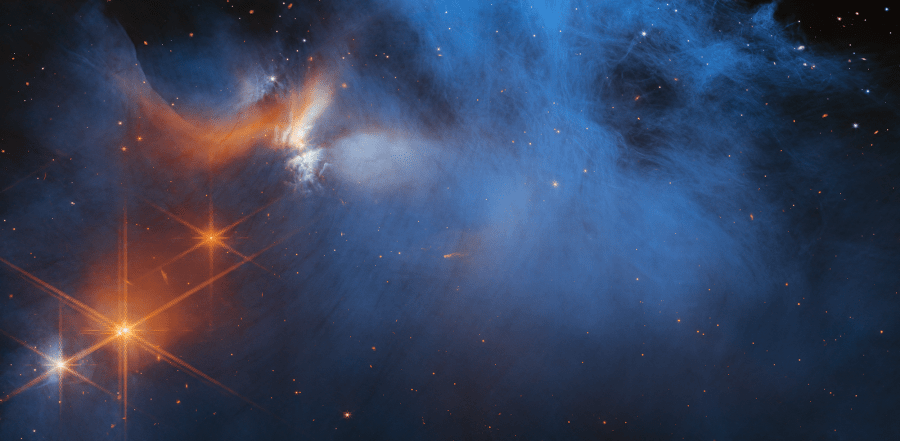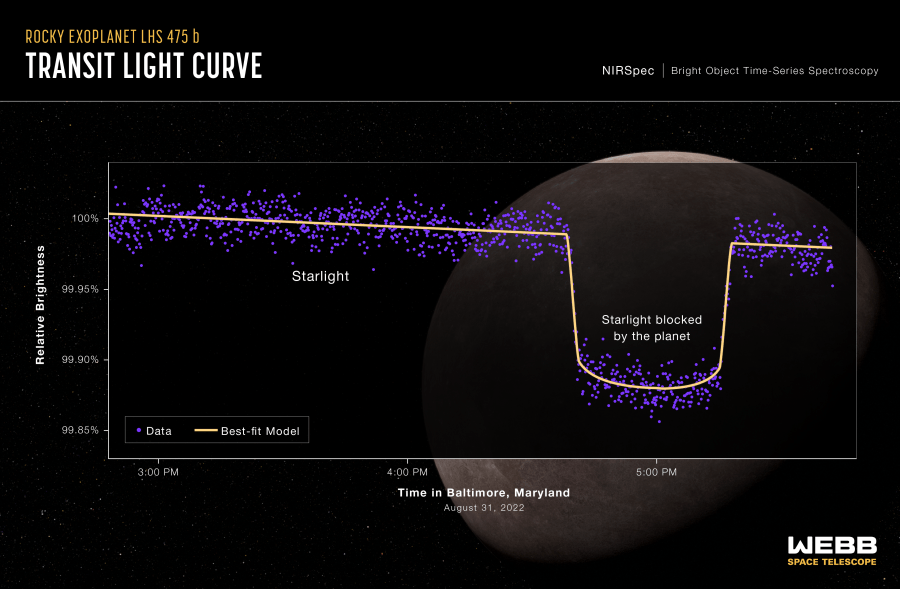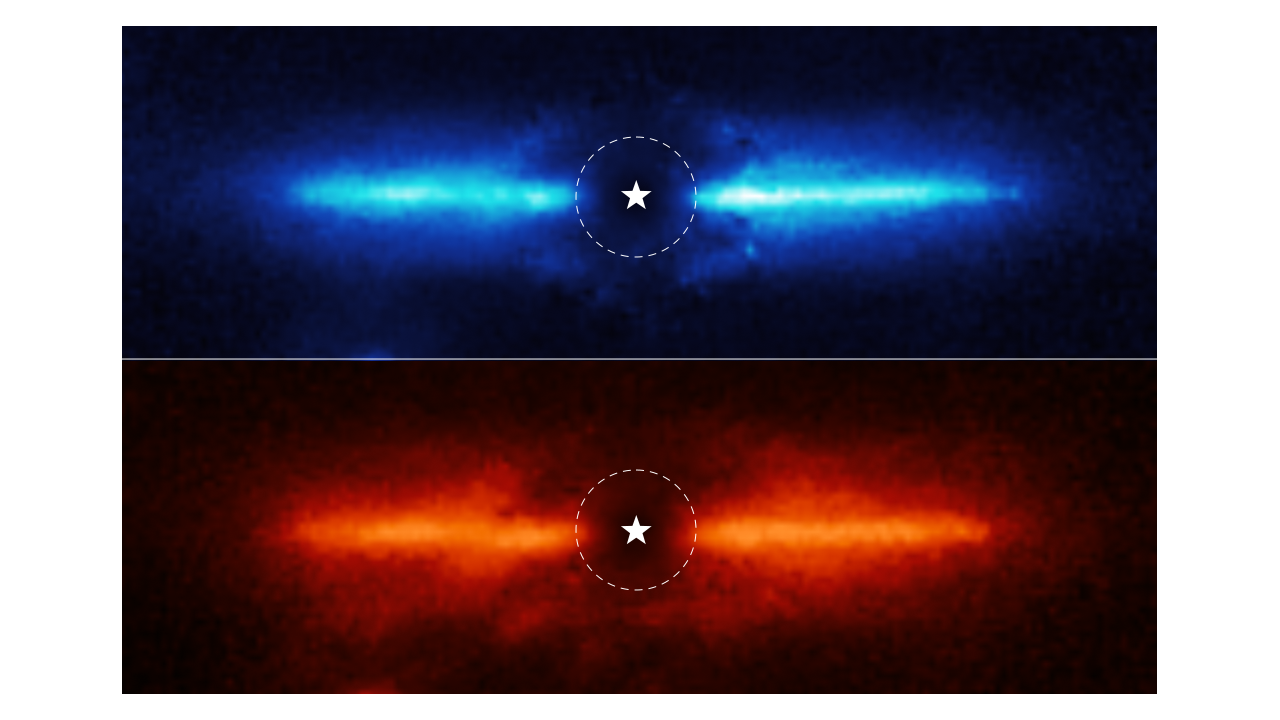Five times the Webb telescope blew our minds in its first year in orbit

NASA’s James Webb Space Telescope may have been years behind schedule and cost more than $10 billion, but in its first year in orbit, the telescope has crushed its assignment.
Webb launched on Christmas Day in 2021 and entered orbit about a month later on Jan. 24. It sees the universe through infrared light, which is invisible to the human eye but can pierce through dense gas and dust, revealing many hidden aspects of the cosmos.
Here are five recent discoveries from the Webb telescope that blew our minds.
Peering into the icy heart of a space cloud

This latest image is a stunner. Astronomers used Webb to peer into a molecular cloud called Chameleon 1. Located approximately 630 light-years from Earth, the wispy cloud is home to a diverse population of some of the coldest ices in the universe.
Inside the molecular cloud, which is forming dozens of new stars, are frozen forms of water, ammonia, methanol, methane and even carbonyl sulfide. These ingredients are not only perfect for building stars and planets, but they could also be the building blocks of life.
Ices like the ones found here can supply all the carbon, hydrogen, oxygen, nitrogen and sulfur needed to form new planets, including habitable ones like Earth. They’re also used in planetary atmospheres to make sugars, alcohols and even amino acids.
Identifying an exoplanet

NASA’s Transiting Exoplanet Survey Satellite (TESS) identified what it thought could be a planet: a small, rocky world orbiting a star in the Octans constellation, 41 light-years from Earth.
A team of researchers — led by staff astronomer Kevin Stevenson and postdoctoral fellow Jacob Lustig-Yaeger at Johns Hopkins University Applied Physics Laboratory — used Webb to watch for dips in starlight, which would happen if it had a planet orbiting it. These blips are called transits.
The researchers then used Webb to analyze the atmosphere of the planet, and while they haven’t been able to make any definitive conclusions, they did learn a few things.
Webb indicated that the world cannot have a super dense atmosphere like Saturn’s moon Titan and that it is a few hundred degrees warmer than Earth, which could make it more like Venus.
The astronomers will have another chance to observe the planet again over the summer and conduct follow-up analysis on the potential presence of an atmosphere. Follow-up observations are planned for this summer.
Webb spies on a stellar nursery

Approximately 200,000 light-years from Earth is an active stellar nursery called NGC 346. Embedded in the Small Magellanic Cloud (SMC), an offshoot of the Milky Way, this stellar nursery is the poster child for studying how stars form.
A new image of this region, captured by the Webb telescope, could reveal new insights of how early stars formed 10 billion years ago, during a period called the “cosmic noon.”
In contrast to the Milky Way, the SMC contains lower concentrations of elements called “metals,” which mean elements heavier than hydrogen or helium. These concentrations reflect a unique opportunity to study what galaxies were like in the early universe, when star formation was at its peak.
Thanks to its close proximity, we’ve been able to study the SMC with multiple telescopes, yet it still remains an enigma. That is until Webb looked at it with fresh eyes, revealing more than 33,000 young stars.
Dusty debris disks

Despite being the largest stellar population in our galaxy, red dwarfs are notoriously difficult to see in the visible spectrum. To that end, they make an ideal target for Webb to view them in the infrared spectrum.
Webb recently gazed upon a nearby red dwarf, called AU Microscopi, which is surrounded by a planet-forming disk of gas and dust. Astronomers previously detected two exoplanet targets orbiting AU Mic thanks to NASA’s exoplanet hunting telescope, TESS. The researchers also noticed that the debris disk was brighter than expected and closer to the star.
Astronomers are hoping to confirm those planets with the help of Webb, as well as other exciting details that could be lurking in this dusty disk.
Galactic green peas

Webb recently imaged a group of distant galaxies in our cosmic backyard and found that they share characteristics with a rare group of galaxies called “green peas.”
These galaxies were first detected in Webb’s detailed deep field image and subsequently analyzed, with Webb’s unique sensitivity revealing the amount of oxygen present for the first time.
Green pea galaxies, first discovered in 2009, appear as small, round, unresolved green dots in the sky. Accounting for just 0.1 percent of nearby galaxies, what these miniscule galaxies lack in size, they make up for in stellar births.
According to the researchers, one of these galaxies is one of the most “chemically primitive” galaxies discovered and could hail from a time when the universe was very young.
“With detailed chemical fingerprints of these early galaxies, we see that they include what might be the most primitive galaxy identified so far,” research leader James Rhoads, an astrophysicist at NASA’s Goddard Space Flight Center in Maryland, said in a statement.
“At the same time, we can connect these galaxies from the dawn of the universe to similar ones nearby, which we can study in much greater detail,” he said.
Copyright 2023 Nexstar Media Inc. All rights reserved. This material may not be published, broadcast, rewritten, or redistributed.

